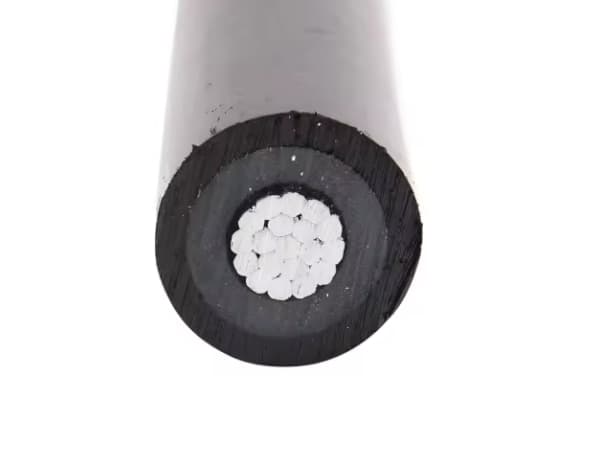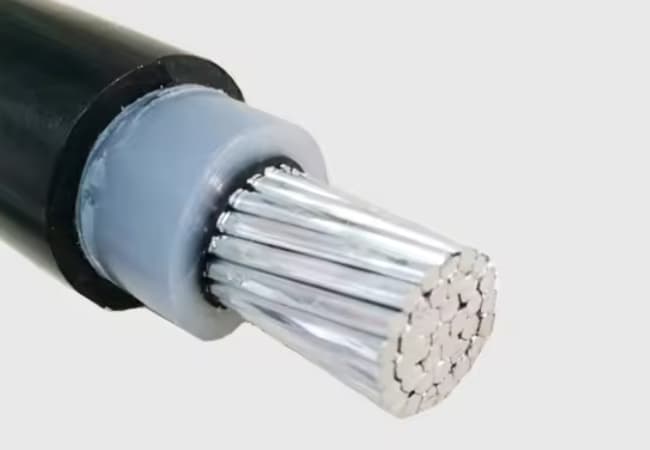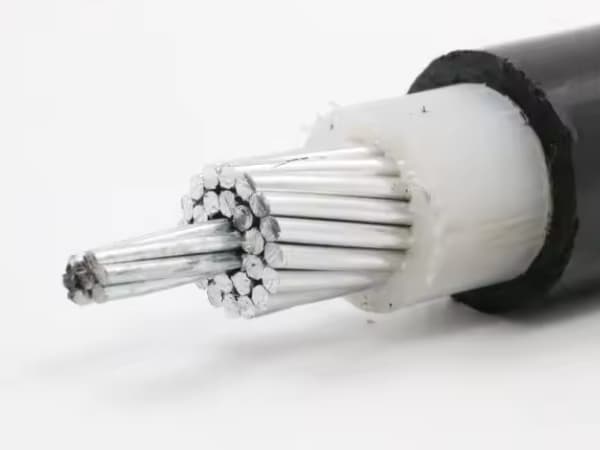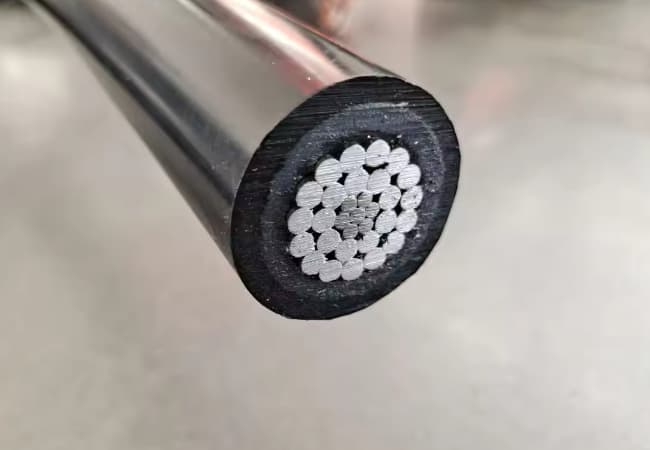
Tree Wire , In an era where consistent electricity is critical to nearly every aspect of modern life, the reliability of power distribution systems plays a pivotal role. Namun, delivering electricity across vast expanses of forested and rural areas presents unique challenges. Among the most significant obstacles to maintaining reliable overhead power lines is the interaction between power lines and trees. Fallen branches, overgrown foliage, and high winds often lead to interruptions in service, equipment damage, and even hazardous conditions.
To combat these issues, the power industry has developed specialized technology, termasuk “tree wire.” This article delves into what tree wire is, its importance, konstruksi, aplikasi, keuntungan, and how it is shaping the future of power distribution in forested areas.
What is Tree Wire?
Tree wire is a type of overhead electrical wire specifically designed for use in areas with heavy vegetation. It is engineered to be resilient against direct contact with tree branches and other foliage, reducing the likelihood of power outages and damage caused by trees coming into contact with the wires.
Tree wire typically features a robust layer of insulation that protects the conductor from electrical faults caused by tree branches touching or falling onto the wire. This makes it particularly effective in forested or rural regions, where traditional bare conductors are more susceptible to disruptions caused by vegetation.
Unlike fully insulated underground cables, tree wire remains an overhead solution. Namun, its semi-insulated design offers increased protection while remaining cost-effective, making it a preferred choice for utility companies looking to balance performance with budget.

Construction of Tree Wire
The construction of tree wire is key to its ability to resist environmental challenges and provide reliable performance even under harsh conditions. Understanding the materials and layers involved in its construction helps explain why tree wire is so effective.
1. Conductor Core
The core of tree wire is made of aluminum or an aluminum alloy, known for its excellent electrical conductivity and lightweight properties. Aluminum is also resistant to corrosion, making it ideal for outdoor applications where the wire is exposed to the elements.
In some instances, aluminum conductor steel-reinforced (ACSR) cables are used as the core, combining the strength of steel with the conductivity and corrosion resistance of aluminum. This allows for higher tensile strength, which is crucial in areas prone to heavy winds or large trees that could potentially fall on the wire.
2. Insulation Layer
One of the defining features of tree wire is its insulation layer, typically made of polyethylene (PE) or cross-linked polyethylene (XLPE). These materials are chosen for their durability and excellent insulating properties. They are designed to withstand exposure to the elements, such as sunlight (UV radiation), rain, snow, dan suhu ekstrem, without degrading or losing their protective qualities.
The insulation also provides a barrier that prevents branches or other objects from causing electrical faults when they come into contact with the wire. This is particularly important in areas where maintaining a clear path around the power lines (known as right-of-way management) is challenging.
3. Abrasion Resistance
Tree wire is designed to be abrasion-resistant, meaning that even if tree branches rub against the wire over time, the insulation layer will not wear down easily. This helps prevent shorts or faults that could result from repeated contact with the wire. The abrasion resistance of the insulation is one of the reasons why tree wire is favored over bare conductors in heavily wooded areas.
4. Weatherproofing and UV Resistance
Another key feature of tree wire is its ability to withstand prolonged exposure to harsh weather conditions. The materials used in the insulation are highly resistant to ultraviolet (UV) rays from the sun, which helps prevent the insulation from becoming brittle or cracking over time. Tree wire is also designed to handle extreme temperatures, whether it’s the intense heat of summer or the freezing cold of winter.

Why Tree Wire is Essential for Overhead Power Distribution
The primary purpose of tree wires is to ensure the continuous and reliable distribution of electricity in areas where vegetation poses a significant risk to power lines. Traditional bare conductors used in overhead power lines are vulnerable to contact with trees, leading to power outages, damaged equipment, and even fires in some cases. Tree wire minimizes these risks by providing a protective barrier between the conductor and the environment.
1. Prevention of Power Outages
One of the most significant benefits of tree wires is its ability to reduce the frequency of power outages caused by tree limbs falling on or touching the wires. In rural and forested areas, it is often impractical or impossible to completely eliminate the presence of trees near power lines. Tree wire offers a solution by allowing power lines to coexist with the natural environment without causing frequent interruptions in service.
2. Improved Safety
Tree cable also enhances the safety of the power distribution system. When a tree branch touches a bare conductor, it can create an electrical fault that not only disrupts service but can also pose a danger to the surrounding area. In some cases, these faults can lead to electrical fires, which can spread rapidly, especially in dry, forested areas. Tree wire helps prevent these dangerous situations by providing an additional layer of protection against electrical faults.
3. Cost-Effective Vegetation Management
Maintaining clear rights-of-way (ROW) around power lines can be a costly and labor-intensive task for utility companies. Tree trimming and vegetation control are necessary to prevent trees from interfering with the power lines, but in some areas, these efforts are either impractical or not feasible on a regular basis.
Tree wires allows for a less aggressive approach to vegetation management. Since the wire is designed to withstand contact with branches, utility companies can reduce the frequency and intensity of tree trimming efforts, leading to cost savings in the long run.
Applications of Tree Wire Cable
Tree wires is used in a variety of settings, each with its own set of challenges and requirements. The wire’s ability to resist environmental factors and reduce the need for constant vegetation management makes it a versatile solution for many applications.
1. Rural and Forested Areas
One of the most common uses of tree wires is in rural and forested regions, where power lines must often be routed through densely wooded areas. These areas are particularly vulnerable to outages caused by falling branches and other debris. Tree wires provides a reliable solution by reducing the impact of these incidents on the power distribution system.
2. Storm-Prone Regions
Tree cable is also used in regions that experience frequent storms, such as hurricanes, ice storms, and heavy winds. During these events, trees and branches are more likely to fall onto power lines, leading to widespread outages. Tree wire helps mitigate this risk by providing an extra layer of protection that can prevent faults even when branches come into contact with the wires.
3. Wildfire Prevention Zones
In areas where wildfires are a concern, tree wires plays an important role in preventing electrical fires. By reducing the likelihood of electrical faults caused by tree branches, tree wire helps lower the risk of sparking a fire that could spread through dry, flammable vegetation.

Advantages of Using Tree Wire Cable
Utility companies that invest in tree wires gain several key advantages, including improved system reliability, reduced maintenance costs, and increased safety.
1. Increased System Reliability
The most immediate advantage of tree wires is its ability to improve the reliability of the power distribution system. By reducing the number of outages caused by vegetation, tree wire helps ensure that electricity is delivered consistently to homes and businesses, even in areas where trees are abundant.
2. Reduced Maintenance Costs
Tree cable can also help utility companies save money on maintenance. In regions where trees grow rapidly or where access to power lines is difficult, the cost of regular tree trimming and vegetation control can be significant. By using tree wire, utility companies can reduce the frequency of these activities, leading to long-term cost savings.
3. Improved Safety
Safety is another major benefit of tree wire. By preventing electrical faults caused by tree contact, tree wires reduces the risk of fires and other dangerous incidents. This is particularly important in areas prone to wildfires or where power lines are close to homes and other structures.
4. Manfaat Lingkungan
Tree cable also offers environmental benefits by reducing the need for aggressive vegetation management. In areas where trees and vegetation are protected or valued for their ecological importance, tree wire allows utility companies to maintain reliable power distribution without the need for extensive tree removal.
Challenges of Tree Wire Implementation
While tree cable offers many advantages, there are also some challenges associated with its implementation. Utility companies must consider factors such as cost, installation requirements, and long-term performance when deciding whether to invest in tree wire.
1. Higher Initial Costs
One of the primary challenges of using tree cable is the higher initial cost compared to bare conductors. The additional materials and manufacturing processes required to produce the insulation layer increase the overall cost of the wire. Namun, these costs are often offset by the reduced need for maintenance and the improved reliability of the system.
2. Installation Complexity
Installing tree cable can be more complex than installing bare conductors, particularly in areas with challenging terrain or limited access. The additional weight and thickness of the wire may require stronger poles and supports, increasing the overall cost and complexity of the installation.
3. Limited Protection
While tree cable provides significant protection against minor contact with tree branches, it is not a complete solution. In cases where large trees fall directly onto the wires, the system may still experience damage or outages. For this reason, tree wire should be used as part of a broader strategy that includes proper vegetation management and system resilience planning.
Tree Wire Manufacture and Supplier
Tree wires is a vital innovation in overhead power distribution that addresses the unique challenges posed by trees and vegetation in forested and rural areas. By providing a durable, insulated conductor that can withstand contact with branches and other foliage, tree wire helps improve the reliability, safety, and cost-effectiveness of power distribution systems.
Dosense Cable is Tree wire manufacture and factory, we provide the price to all over the world.
